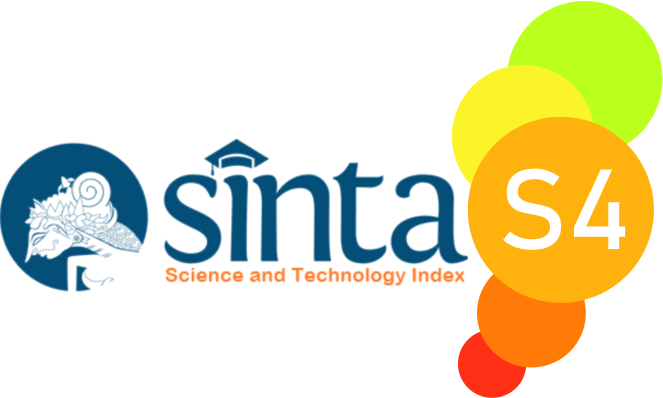IMPROVING STUDENTS’ PRONUNCIATION SKILL USING ELSA SPEAK APPLICATION
Abstract
The purpose of this research is to Introduce the ELSA Speak Application as media to improve students' pronunciation skills. English Language Speech Assistant is an acronym for ELSA. English Language Speech Assistant can be downloaded for free from AppStore or Google Play. complete with various features to improve the pronunciation and speaking of students with American accents by training them with various exercises to pronounce words/phrases/sentences correctly. Corresponding to the microphone icon that the learner can use directly to speak as the audio has been listened to.This research is an Action Research that aims to Improve students’ pronunciation skills using ELSA Speak Application. This research discusses how ELSA Speak Application as learning media can improve students’ pronunciation skills. The data were collected through a test of pronunciation and Interviews in Classroom action research. The researcher made three cycles and gave a score for each cycle. In the first cycle, the students’ Average score is 70 points, the second cycle is 75 points and the last cycle is 80 points. ELSA Speak application helps students pronounce a variety of words more easily and comprehensively. The results showed that the use of the ELSA Speak Application has provided convenience and benefits for students in improving their English Pronunciation skills by using the ELSA Speak application.
References
Baker, A. &. (2016). Feedback on second language pronunciation: A case study of EAP teachers‟ beliefs and practices. Australian Journal of Teacher Education.
Begum, A. H. (2016). English Pronunciation Problems of the Tertiary Level Students in Bangladesh. Journal of Arts, Science & Commerce.
Cakmak, F. (2019). Mobile Learning & Mobile Assisted Language Learning (MALL) in Focus. Language and Technology.
El-Hussein, M. O. (2010). Defining mobile learning in the higher education landscape. Educational. Technology & Society.
Elimat, A. &. (2014). Automatic speech recognition technology as an effective means for teaching pronunciation. The JALT CALL Journal.
Gerald, K. (2001). How to Teach Pronunciation (second). Longman.
Haryadi, S. H. (2020). Integrating “English Pronunciation” App Into Pronunciation Teaching: How It Affects Students‟ Participation and Learning. Journal of Languages and Language Teaching.
Ismail, I. E. (2019). Students’ Perceptions of the Benefits of Mobile Polling Technology in Teaching and Learning in College. Jurnal Pendidikan Progresif.
Joy, C.o B. Y. (2017). Contributions of new technologies to the teaching of English pronunciation. Language Value.
McCrocklin, S. (2015). Reflective and Effective Teaching of Pronunciation. Retrieved from researchgate: https://www.researchgate.net/publication/327139781
O‟Connor. (1998). Better English Pronunciation (twentieth). Cambridge University Press.
Pilar, R.-A. (2013). The Use of Current Mobile Learning Applications in EFL. Procedia- Social and Behavioral Sciences 103.
Pokrivcakova, S. (2019). Preparing teachers for the application of AI-powered technologies in foreign language education. Journal of Language and Cultural Education, 7(3), 135–153. https://doi.org/10.2478/jolace-2019- eurocall2017.733. Journal of Language and Cultural Education.
Sarmita, S. I. &. (2019). Applying ELSA Speak Software in the Pronunciation Class: Students‟ Perception. Edumaspul - Jurnal Pendidikan.
Tlazalo, T. A. C. (2017). PROFILE Issues in Teachers’ Professional Development. Confidence in EFL Oral Skills.
Copyright (c) 2022 Anggraini Anggraini

This work is licensed under a Creative Commons Attribution-ShareAlike 4.0 International License.

Journey: Journal of English Language and Pedagogy by http://ejurnal.budiutomomalang.ac.id/index.php/journey/index is licensed under a Creative Commons Attribution-ShareAlike 4.0 International License.






